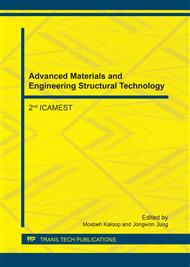p.8
p.14
p.25
p.30
p.36
p.42
p.48
p.54
p.59
Structural Features of the Carbon Material Synthesized by Plasma-Arc Method at Low Buffer Gas Pressure
Abstract:
The carbon material was synthesized by the plasma-arc method at the buffer gas pressure of 3 Torr. The material has physical properties different from the properties of the material synthesized at pressure of 25 Torr and higher. The low pressure of buffer gas leads to formation of materials consisting of carbon nanoparticles with average size lower than 10nm. The nanoparticles have form of carbon globules, which consist of the graphite-like structure. This structure is the composition of the stacked, twisted and closed nanofragments of graphene. The dominating interlayer distance in the structure is 0.4 nm. The dominating size of crystallinity La is 2.7nm. The graphite-like structure allows to enhance the electrical conductivity in compare with the material synthesized at buffer gas pressure of 25 Torr and higher. Nevertheless the conductivity of the material is significantly lower than the conductivity of pure graphite because of the contact resistance arising from the presence of the outer layer of amorphous carbon on some globules and the presence of the globules of fully amorphous carbon.
Info:
Periodical:
Pages:
36-41
Citation:
Online since:
April 2017
Authors:
Keywords:
Price:
Сopyright:
© 2017 Trans Tech Publications Ltd. All Rights Reserved
Share:
Citation:


